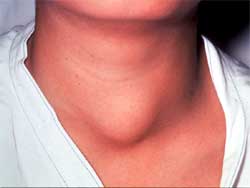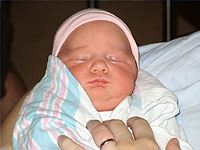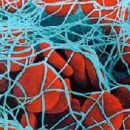Cushing syndrome may indicate the presence of so-called paraled apoths in patients. On the types of Cushing Syndrome, as well as on tumors, it is causing, read in this article.
Content
Cushing Syndrome and its views
Kushing Harvey Williams - American doctor, one of the founders of neurosurgery. Described the form of endocrine disorders due to the tumor (basophil adenoma) pituitary. The name of this person is called Cushing Syndrome.
Cushing syndrome is endogenous (t.E. Explained by internal reasons) and exogenous (having internal reasons).
Endogenous Cushing syndrome includes 3 variants of the disease:
- Kushing's pituitary syndrome (Cushing's disease);
- adrenal syndrome of Cushing (adrenal tumors and nodal hyperplasia of adrenal cortex);
- Ectopic syndrome Cushing.
The share of pituitary, adrenal and ectopic syndromes is accounted for, respectively, 68, 17 and 15% of all cases of Endogenous Cushing syndrome.
Exogenous Cushing syndrome (it is also called medicinal) due to long-term treatment with glucocorticoids or other steroids.
Exogenous Cushing syndrome occurs much more often than endogenous: his share among all cases of Cushing syndrome is 60-80%. The diagnosis and treatment of exogenous syndrome of Cushing does not represent difficulties, so further in the article it will be about endogenous syndrome.
Tumors causing Cushing syndrome
 Ectopic Cushing Syndrome - the most common among syndromes due to paranendocrine apudomas. Most often found:
Ectopic Cushing Syndrome - the most common among syndromes due to paranendocrine apudomas. Most often found:
- Fleecellular lung cancer;
- carcinoids of the gastrointestinal tract or carcinoid bronchi;
- Timoma;
- Tumors from islet cells;
- Medullar thyroid cancer;
- Feochromocytoma.
Sometimes Cushing syndrome is observed in patients with primary tumors of ovaries, liver and breast. Interestingly, in 1928., Over 4 years before Kushing described the symptom complex to which his name was assigned, some Brown observed in a patient with a lung cancer, a clinical picture, characteristic of the high activity of the adrenal cortex.
It should be emphasized that the signs peculiar to the pituitary and exogenous syndrome of Cushing (obesity of the body, Strya, the luna-like face, fat hypertension, hyperpigmentation), in the ectopic syndrome of Cushing, there are far from always. These signs, as well as osteoporosis, are more characteristic of slowly growing carcinoids, Tim and Feochromocyte.
If the results of laboratory research confirm the ectopic syndrome of Cushing, proceed to the search for the tumor.
After the diagnosis of the tumor, depending on its localization and histological structure, they choose surgical intervention, radiation therapy or chemotherapy. If you failed to remove or destroy the primary tumor, drugs are prescribed, overwhelming the secretion of corticosteroids.









